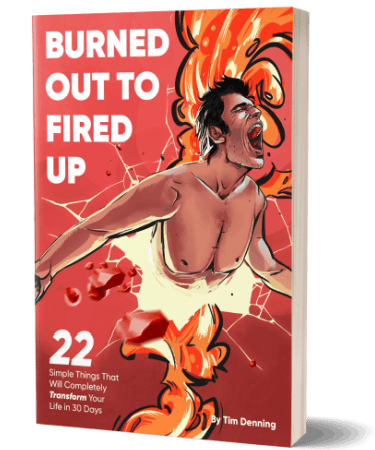Success in writing is easier than you think.
It’s based on your habits. Change your habits to the right ones and your writing trajectory becomes predictable.
But get lost in your own thoughts, angry with platforms and randoms, and watch your potential get lit on fire.
I’m not that smart. So I just look at the habits of the top 1% digital writers and copy them. Here’s what they do.
1. Don’t guess like an amateur, follow the data
Great writing is saying the same handful of things 10,000 different ways.
To find those handful of things you need data. Amateur writers guess. They hope their story is good. They play the lottery and the chance game with publications and platform curators. Screw that.
Pay attention to this data:
- Likes
- Open rates (for email)
- Number of comments
- Quality of comments
- Number of reshares
- Overall views versus reads
Every platform has analytics. There’s no excuse to ignore them.
Looking at the data isn’t about trying to go viral or saying what is popular. It’s about finding out what topics people want to hear from you about and seeing which expertise and life experiences of yours people care about.
Once you know that, it’s easier to double down on the parts of your life that are worth writing about. Because not everything in your life is helpful.
2. Obsess over the first sentence
Look at some of the best books ever written.
Open the first page and read the first sentence. You’ll be shocked how many bangers you find. That’s because good writing needs to open strong and move people.
One tip that helped me is to tell people how I feel in either the first sentence or the intro. It instantly triggers emotion and glues readers to your story.
Make the intro get to the point
Too many intros are painfully boring to read.
They try way too hard to set up the story and provide context that can be provided as a reader makes their way through a piece of writing.
When any part of writing is long the cognitive mental load to keep going is often a battle that gets lost. This isn’t the newspaper age anymore. Open strong, get to the point, and drop us in the action.
You can draw things out a bit later on. First you need to hook the reader.
Don’t ignore subheadings
They’re not labels. They’re mini sales pitches that encourage the reader to keep reading. They should be almost as good as your headline.
3. Use a good-looking cover image
Lazy writers use the same old Unsplash photos that have been passed around the internet like herpes for the last 5 years.
Go to an AI-image-generation tool and write a prompt to create a fresh image. It’ll make your stories stand out from the crowd.
Better yet, draw your own illustrations if you can. Example: Darius Foroux.
4. Post daily
This one’s meta.
If you don’t have a daily writing habit, you likely won’t become a top 1% digital writer and need the rest of these habits lol.
Doesn’t mean you need to publish 10,000 words a day and skip going to work. Just means people need to hear from you frequently.
Tweets are enough to start. A weekly newsletter is good too.
5. Bring in outside opinions, otherwise you sound like a know-it-all
Instagram influencers only ever talk about themselves.
Have you noticed that? It’s because they think their life is #Awesome. Underneath we all know they’re living a miserable existence and drowning in pools of tears.
If you don’t want to sound like an influencer and eventually get turned off, bring in outside sources.
What do the top 1% in your niche think? What clever quotes could you add that don’t include overused ones from Henry Ford or Einstein?
Borrow credibility from others to boost yours.
6. Edit the same piece of content for multiple platforms
Top 1% writers aren’t copy-paste sheep.
They don’t pray and spray their words all over the internet, hoping to get half-pregnant with a viral article.
- They occasionally reuse content.
- They’re quiet and tasteful about it.
- They’ll often edit the formatting for whatever platform they want to post on.
An essay on their website becomes a tweet thread in a month, that’s heavily edited. Or a great tweet becomes a headline. Or an essay becomes a LinkedIn carousel with a few career and leadership keywords added.
Why write new content every week when you’ve already done the work? Recycle. Just don’t overdo it…
Or your work becomes a boring old dumpster fire.
7. Rewrite your favorite ideas and don’t be scared
Using quotes is nice. What’s better is to rewrite those quotes in your own words. Many writers are afraid to do this.
They think it’s theft or plagiarism. They think every idea has to be unique. Unless you’re a genius like Einstein then you probably don’t have unheard of ideas. I know I don’t. Good. You’re human.
So borrow from others.
What I notice is as I start to rewrite someone else’s sentence, it morphs into something completely different. But I can never predict it and each time my brain tells me it won’t happen — yet it does.
8. Headlines — I have to mention this one, sorry
I know you feel like a clickbait hero when you write them but it’s part of the gig. It’s only one sentence. Come on amigo.
Nail the headline because if you don’t, then being a top 1% writer won’t happen. Even having a writing career is unlikely.
Just ask the thousands of unsuccessful writers hanging around on various platforms and not growing their email lists or making any money.
They can’t figure out why. It’s headlines.
One more time: headlines. Write good ones.
9. Look at the highlights on the article
Some platforms show reader highlights.
And some platforms allow you to tweet your favorite sentences. The goal is to see which sentences smacked people in the mouth and made their lazy hands want to highlight a phrase.
If you really want to get smart you can rewrite articles or edit them down so that all the unhighlighted sentences get removed. Then all you have left is the gold that resonated with people.
Highlights are curation of your work. Listen and implement the feedback. A section of writing with no highlights is often a sign of reader boredom.
10. Make the content look sexy
- Pictures
- Pie graphs
- Bullet points
- Line breaks
Just don’t show huge walls of text. Readers need breaks.
Formatting helps them mentally get through your piece. It organizes your thoughts into bite-sized chunks and says “here reader, eat this little bit, now this one.” (Just like how I feed my 6 month old daughter.)
11. Create a writing operating system
This one is the most pro tip of all.
Top 1% writers treat writing on the internet like a game. They have an exact formula they follow so they don’t have to rely on willpower or think too much about what they need to do next.
Here’s what mine looks like:
- Read content for 10 hours a week
- Capture ideas in Roam Research along the way
- Write 10 headlines a day
- Write on one day and edit a few days later
- Chat daily with other writers and help share each other’s work
- Be active in a writing community to stay up to date with where to publish and why
- Check the google analytics of my personal website weekly
- Write with white noise and music on
- Publish a weekly newsletter
- Tweet daily
This system allows me to automate my results. I’ve followed some version of this for 9 years straight. It reliably evens out the good months and bad months.
I don’t depend on virality to make a living. No. I rely on a system. As my system improves, so too does my writing and how much money I earn.
If you do nothing else, get a writing system and stick to it for a year.


